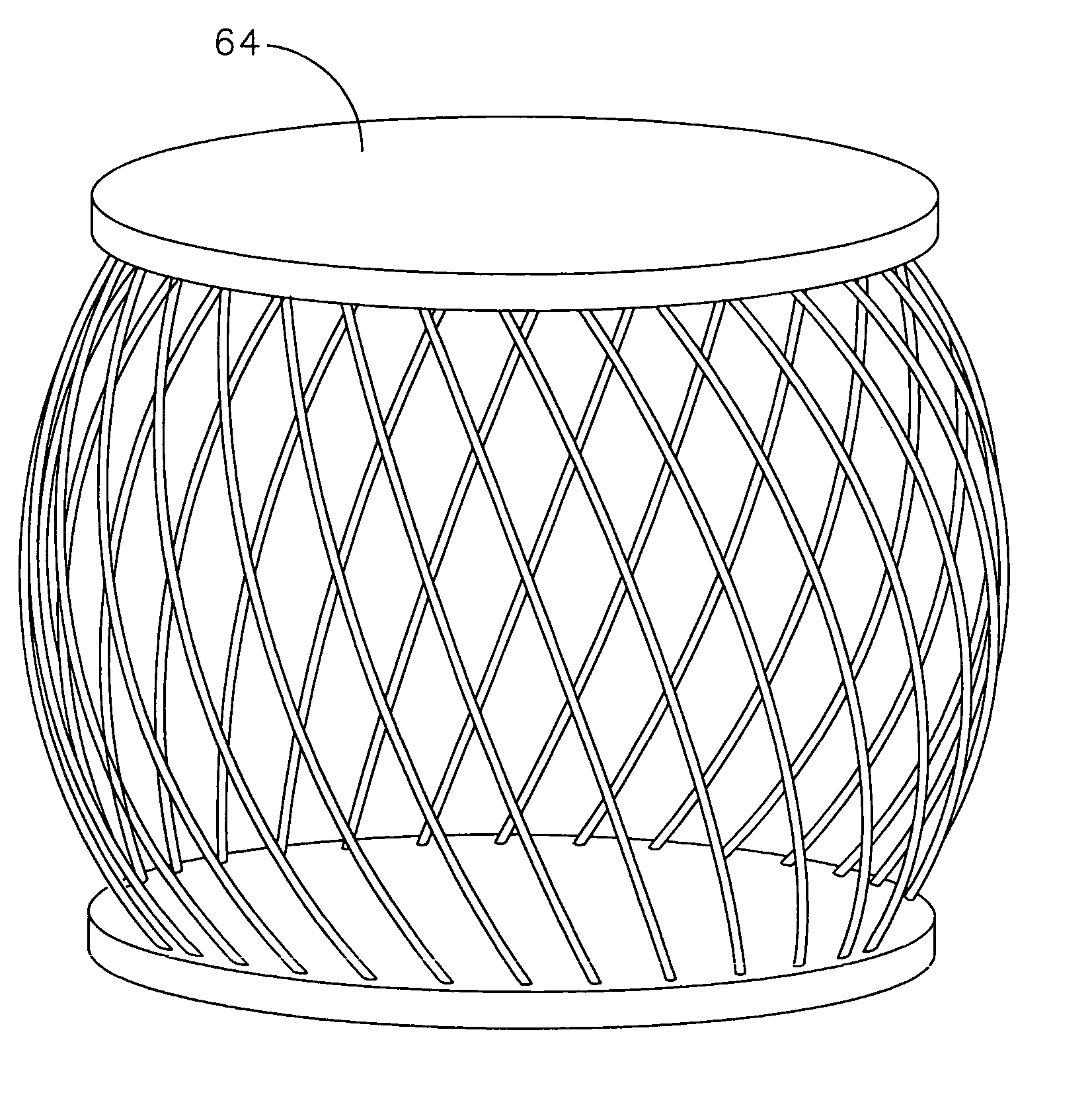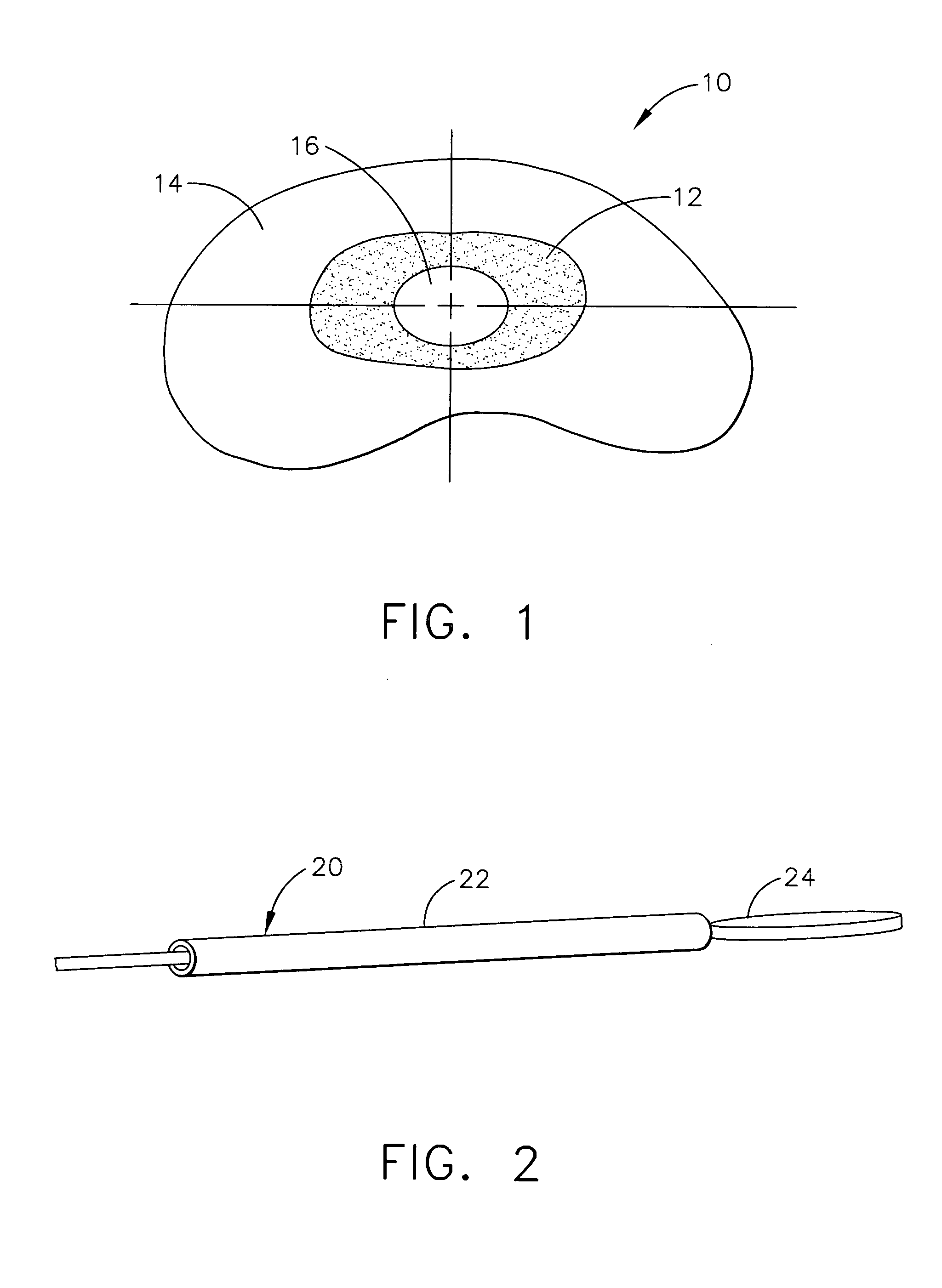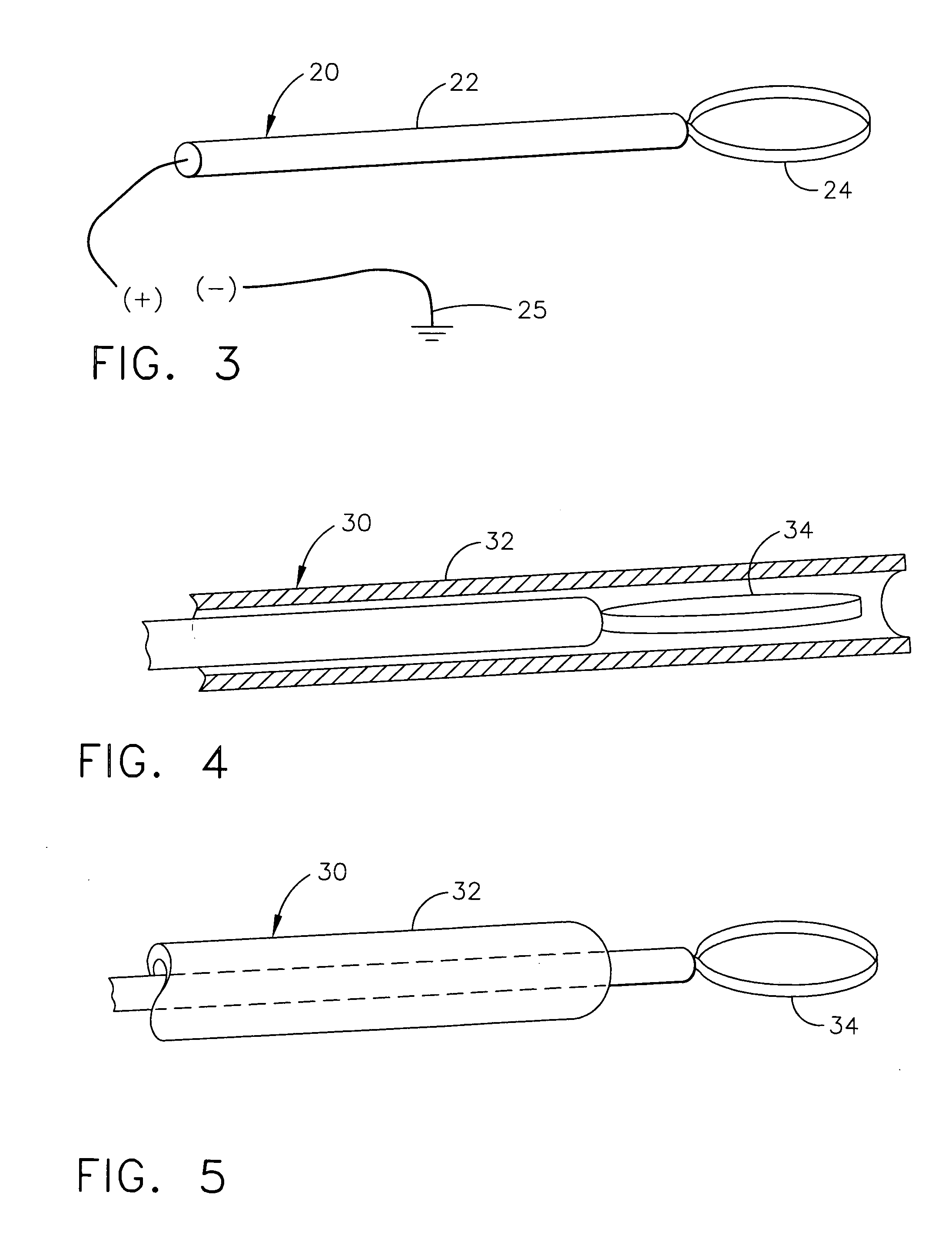Spinal disc nucleus implant
- Summary
- Abstract
- Description
- Claims
- Application Information
AI Technical Summary
Benefits of technology
Problems solved by technology
Method used
Image
Examples
Embodiment Construction
[0055] Referring now to FIG. 1, there is shown a representative spinal disc, generally indicated at 10. Disc 10 contains a nucleus 12 and an annulus 14. Within nucleus 12 is a centrally located cored out section 16. Section 16 is created to precisely locate an artificial nucleus implant which would accept a standard shape. Section 16, which houses the implant, should ideally be centered in the nucleus to accept the natural movement and forces that are generated by normal patient activity.
[0056] To define a standard core section 16 shape, an instrument must be developed which can consistently core out this area within nucleus 12. The instrument should be small in size such that the procedure can be performed as minimally invasive. It is important that the nucleus implant remains centered on the line of force, preventing it from placing undue forces on annulus 14. One method for accomplishing these objectives is to leave annulus 14 in place and some of the tissue of nucleus 12 but to...
PUM
 Login to View More
Login to View More Abstract
Description
Claims
Application Information
 Login to View More
Login to View More - R&D
- Intellectual Property
- Life Sciences
- Materials
- Tech Scout
- Unparalleled Data Quality
- Higher Quality Content
- 60% Fewer Hallucinations
Browse by: Latest US Patents, China's latest patents, Technical Efficacy Thesaurus, Application Domain, Technology Topic, Popular Technical Reports.
© 2025 PatSnap. All rights reserved.Legal|Privacy policy|Modern Slavery Act Transparency Statement|Sitemap|About US| Contact US: help@patsnap.com



